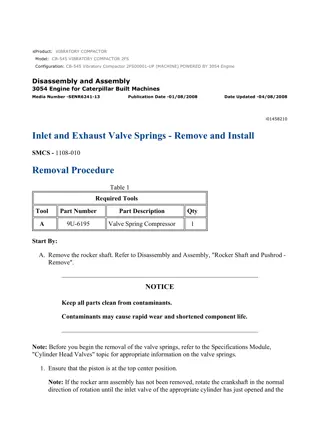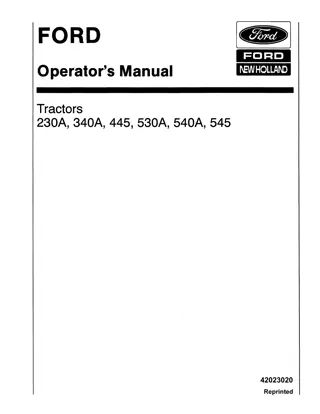
Understanding UPGMA Phenetic Clustering in Phylogenetics
Explore the UPGMA algorithm for phenetic clustering in phylogenetics, discussing its steps and application in estimating phylogenetic trees. Discover how UPGMA constructs composite taxa and generates new distance matrices to create a representative tree. Learn about the assumptions and limitations of UPGMA in phylogenetic tree estimation.
Download Presentation

Please find below an Image/Link to download the presentation.
The content on the website is provided AS IS for your information and personal use only. It may not be sold, licensed, or shared on other websites without obtaining consent from the author. If you encounter any issues during the download, it is possible that the publisher has removed the file from their server.
You are allowed to download the files provided on this website for personal or commercial use, subject to the condition that they are used lawfully. All files are the property of their respective owners.
The content on the website is provided AS IS for your information and personal use only. It may not be sold, licensed, or shared on other websites without obtaining consent from the author.
E N D
Presentation Transcript
Lecture 7 Algorithmic Approaches Justification: Any estimate of a phylogenetic tree has a large variance. Therefore, any tree that we can demonstrate to be optimal (under some criterion) is not guaranteed to be the true tree. A tree produced by a fast algorithm may be just as close to the true tree as the optimal tree. It makes little sense to waste time & resources searching for the optimal tree. In my view, this is true under some limited contexts (e.g., identifying a tree for evaluation of models), but it s probably a bad idea to make it one s default position.
UPGMA - Phenetic clustering Steps: 1) Identify the most similar pair of taxa (i.e., that pair with the smallest Di,j). 2) Merge them into a composite OTU (called i/j), & place each at the end of a branch (Di,u & Dj,u) of length Di,j/2. 3) Create a new matrix with the distances to composite taxon i/j calculated as the average of all pairwise comparisons: Dk,i/j = (niDk,i + njDk,j) / (ni + nj), where ni is the number of taxa in the cluster. 4) Iterate until all taxa have been added to the cluster.
UPGMA - Phenetic clustering OTU-1 ----- OTU-2 0.17 ---- OTU-3 0.21 0.30 ----- OTU-4 0.31 0.34 0.28 ----- OTU-5 0.23 0.21 0.39 0.43 ---- OTU-1 OTU-2 OTU-3 OTU-4 OTU-5 OTU-1/2 ------- OTU-3 0.255 ----- OTU-4 0.325 0.28 ----- OTU-5 0.22 0.39 0.43 OTU-1/2 OTU-3 OTU-4 OTU-5 ----- Italics are average distances. Plain text was taken from original matrix.
UPGMA - Phenetic clustering The same matrix: OTU-1/2 ------- OTU-3 0.255 ----- OTU-4 0.325 0.28 ----- OTU-5 0.22 0.39 0.43 OTU-1/2 OTU-3 OTU-4 OTU-5 ----- Again, we erect a new matrix with composite OTU-1/2/5.
UPGMA - Phenetic clustering Now in generating the new matrix, we take the unweighted average of the distances (each pairwise distance among members of the composite OTU is weighted equally). OTU-1/2/5 ------------- OTU-3 0.300 ------- OTU-4 0.360 0.28 ------- OTU-1/2/5 OTU-3 OTU-4 D1/2/5,3 = [(0.255 * 2) + 0.39] / 3 = 0.300 D1/2/5,4 = [(0.325 * 2) + 0.43] / 3 = 0.360
UPGMA - Phenetic clustering OTU-1/2/5 OTU-3/4 OTU-1/2/5 ------- OTU-3/4 0.330 ------- And D1/2/5,3/4 = [(0.30 * 3) + (0.36 * 3)] / 6 = 0.330 0.055 0.025 Thus, the distance from the root to any tip is 0.330 / 2 = 0.165. A UPGMA tree will be a good estimate of the phylogeny if, and only if, the evolution of the group has been very clock like (rates don t change at all along branches) and if distances are perfectly additive, but remember that this is not its intended use.
Star Decomposition Neighbor Joining This method starts by converting the raw distance matrix to corrected distance matrix. 1. First, for each taxon i, the net divergence, ri, from all other is calculated. n ri= di,k k=1 2. The corrected matrix is given by: Mi,j = di,j [ri / (n - 2)] [rj / (n - 2)] 3. The minimum Mi,j (the shortest corrected distance) identifies the two taxa to be united to an ancestral node (u). Branch lengths are calculated. 4. A new matrix is calculated by replacing taxa i and j with their ancestral node u. 5. If more than two nodes remain, reset n = n 1 and return to step 1. If only two nodes remain, vi,j = di,j.
Star Decomposition Neighbor Joining A worked example using the same matrix we used for UPGMA 1. First, for each taxon i, the net divergence, ri, from all other is calculated. n ri= di,k k=1 2. The corrected matrix is given by: Mi,j = di,j [ri / (n - 2)] [rj / (n - 2)] OTU-1 ------- -0.477 -0.490 -0.450 -0.497 OTU-2 0.17 ------- -0.433 -0.453 -0.550 OTU-3 0.21 0.30 ------- -0.566 -0.533 OTU-4 0.31 0.34 0.28 ------- -0.443 OTU-5 0.23 0.92 0.307 0.21 1.02 0.340 0.39 1.18 0.393 0.43 1.36 0.453 ------ 1.26 0.420 ri ri /(n-2) 1 2 3 4 5 3. The minimum Mi,j (the shortest corrected distance) identifies the two taxa to be united to an ancestral node (u).
Star Decomposition Neighbor Joining 3. This new node u has three branches emanating from it: one to terminal i, one to terminal j, and one to the rest of the tree. v3,u = d3,4 / 2 + (r3 /3 r4 /3 ) / 2 = 0.28 / 2 + (0.393 0.453) / 2 = 0.11 v4,u = d3,4 - v3,u = 0.28 0.11 = 0.17
Star Decomposition Neighbor Joining 4. A new matrix is generated, with ancestral taxon u replacing i & j (here, terminals, 3 & 4). dk,u = ( di,k + dj,k di,j) /2 3 dk,3 u k d3,4 dk,4 d1,u = ( d1,3 + d1,4 d3,4) /2 = (0.21 + 0.31 0.28) / 2 = 0.12 d2,u = (d2,3 + d2,4 d3,4 ) /2 = (0.30 + 0.34 0.28) / 2 = 0.18 d5,u = (d5,3 + d5,4 d3,4) /2 = (0.39 + 0.43 0.28) / 2 = 0.27 4 OTU-1 ------- -0.370 -0.385 -0.425 OTU-2 0.17 ------- -0.425 -0.385 OTU-5 0.23 0.21 ------- -0.370 Node u 0.12 0.18 0.27 ------- ri ri /(n 2) 0.52 0.260 0.56 0.280 0.71 0.355 0.57 0.285 1 2 5 u
Star Decomposition Neighbor Joining 5. So the star is decomposed further by uniting node u and OTU-1 with an ancestral node w, and the two branch lengths are calculated as follows: v1,w = d1,u / 2 + (r1/2 ru/2) / 2 = 0.12 / 2 + (0.260 0.285) / 2 = 0.046 vu,w = d1,u v1,w= 0.12 0.046 = 0.074 We have three nodes now, w, 2, & 5, so we iterate.
Star Decomposition Neighbor Joining Set n = 3 & calculate distances from node wto the remaining OTU s 2 and 5. Just as we did in step 3, we re-calculate the distance matrix: d2,w = ( d1,2 + du,2 d1,u) /2 = (0.17 + 0.18 0.12) / 2 = 0.115 d5,w = (d1,5 + du,5 d1,u ) /2 = (0.23 + 0.28 0.12) / 2 = 0.195 OTU-2 ------- -0.510 -0.520 OTU-5 0.21 ------- -0.510 Node wri 0.115 0.195 ------- ri /(n 2) 0.325 2 5 w 0.325 0.395 0.395 0.310 0.310 vy,2 = d2,w / 2 + (r2/1 rw/1) / 2 = 0.115 / 2 + (0.325 0.310) / 2 = 0.065 vy,w = 0.115 0.065 = 0.050
Star Decomposition Neighbor Joining Finally, we calculate the distance from node y to OTU 5: d5,y = ( dw,5 + d2,5 d2,w) /2 = (0.195 + 0.21 0.115) / 2 = 0.145 = v5,y
Star Decomposition Neighbor Joining The number of calculations decreases as we decompose the star tree. NJ is not phenetic. It is explicitly calculating ancestors and parsing similarity into ancestral vs. derived. Neighbor joining is often interpreted as an approximation to the ME solution. An important modification to the neighbor-joining algorithm, BIONJ incorporates variances and covariances of di,j
The UPGMA and NJ trees are different for this matrix. OTU-1 ----- OTU-2 0.17 ---- OTU-3 0.21 0.30 ----- OTU-4 0.31 0.34 0.28 ----- OTU-5 0.23 0.21 0.39 0.43 ---- OTU-1 OTU-2 OTU-3 OTU-4 OTU-5 NJ Tree UPGMA Tree
Stepwise Addition Start with three taxon tree, compute its score under some criterion (usually ML or MP) and add a fourth in the manner that incurs the smallest decrease in optimality. 1 1 0 1 1 0 2 0 0 1 1 0 Characters 3 4 0 1 1 0 0 1 0 1 1 1 A B C D E 5 1 0 1 1 1 6 0 0 1 1 0 There are 3 possible places to add taxon D, indicated by numbers 1 3. The optimality score is computed for each of these:
Stepwise Addition Option 1 is chosen because it has the shortest in length (i.e., is optimal).
Stepwise Addition Again, characters are optimized on each of these 5 possibilities: Here, we ve used stepwise addition build a tree(s) using parsimony. The number of calculations increases as we proceed.
Stepwise Addition Addition sequence is critical. The method is starting-point dependent, so different addition sequences can produce different stepwise addition trees. Options: As is In the order that the taxa appear in the matrix. Shortest One may check all triplets, choose that which has the shortest tree and, at each step, assess all candidates, and choose that which adds least length. Random One may use random addition sequences and replicate a number of times. For clean data, there should be only small differences in the stepwise addition tree, but for most real data there will be multiple stepwise addition trees. We ll make use of this in searching tree space.
Quartet Methods 5 5! = For 5 taxa, there are 5 quartets: (5-4)!(4!) 4 {1,2,3,4} {1,2,3,5} {1,2,4,5} {1,3,4,5} {2,3,4,5} ((1,2)3,4) ((1,2)3,5) ((1,2)4,5) ((1,3)4,5) ((2,3)4,5) ((1,3)2,4) ((1,3)2,5) ((1,4)2,5) ((1,4)3,5) ((2,4)3,5) ((1,4)2,3) ((1,5)2,3) ((1,5)2,4) ((1,5)3,4) ((2,5)3,4) There is a final quartet puzzling step that assembles optimal quartets: ((1,3),5,(2,4)).













